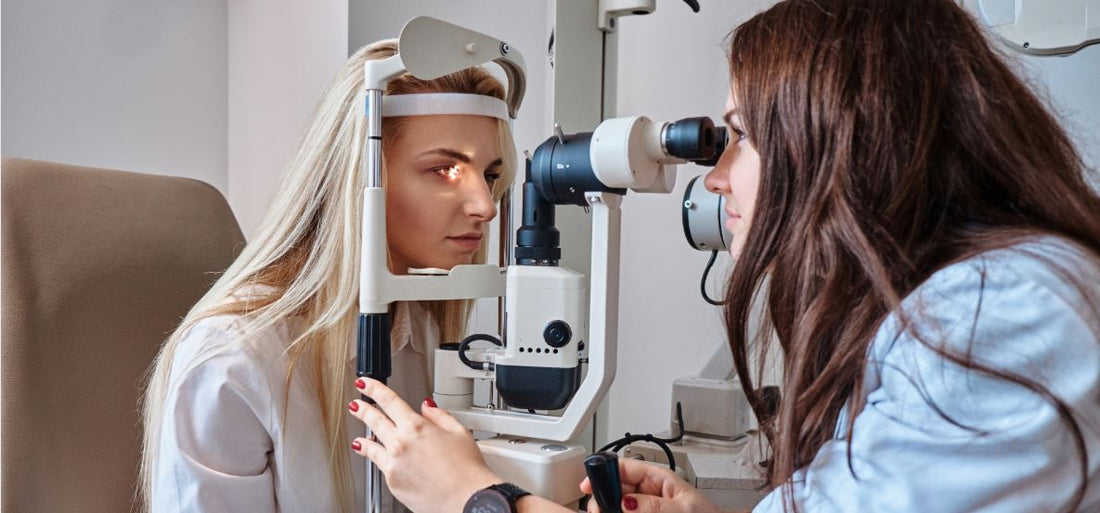Knowledge Hub
Key nutrition supplements for a footballer
Boosting Performance:The Winning Combination of Vitamin C and Vitamin B12 for Footballers In the world of football, ‘getting the edge’ in order to reach peak performance is essential for players aiming to reach the pinnacle of the sport. While rigorous training regimes, proper nutrition and sufficient rest play crucial roles in enhancing athletic prowess, there are key supplements that can unlock a players additional physical and mental attributes. Let’s take a look at two of these supplements, Vitamin C and Vitamin B12; a winning combination to elevate the performance of footballers. IAs the England women’s football team (The Lionesses) prepare for the biggest match of their lives against Sain in the World Cup final, we will delve into the reasons why these vitamins are indispensable for athletes aiming to excel on the pitch. Vitamin C: The Immunity and Recovery Powerhouse Vitamin C, also known as ascorbic acid, is a water-soluble vitamin that has gained popularity for its immune-boosting properties. However, its benefits extend far beyond just fighting off the common cold. For footballers, the advantages of Vitamin C could be match-winning: 1. Immune System Support: The demanding training schedules and physical exertion that footballers undergo can sometimes weaken the immune system, making players susceptible to illnesses. Vitamin C is renowned for bolstering immune function, reducing the risk of infections that could side-line a player during crucial matches. 2. Collagen Synthesis: Collagen is a structural protein that plays a vital role in maintaining healthy connective tissues, including ligaments, tendons, and cartilage. Footballers often subject these tissues to immense stress, (don’t mention the metatarsals!) and Vitamin C is essential for collagen synthesis, contributing to injury prevention and faster recovery. 3. Antioxidant Defence: The oxidative stress induced by intense physical activity can lead to the production of free radicals, which may damage cells and impair performance. Vitamin C acts as a potent antioxidant, neutralising these free radicals and minimising cellular damage, thereby aiding in overall recovery. Plus, we all know the importance of a strong defence! Vitamin B12: The Energy and Performance Booster Vitamin B12 is another indispensable nutrient for footballers seeking optimal performance. This water-soluble vitamin plays a pivotal role in various bodily functions, particularly those related to energy production and neurological well-being: 1. Energy Metabolism: Football matches demand bursts of intense energy and sustained effort. Vitamin B12 is essential for the metabolism of carbohydrates and fats, converting them into energy that fuels players throughout the game. Adequate B12 levels translate to enhanced stamina, endurance on the field and a marauding run down the left wing. 2. Red Blood Cell Formation: Vitamin B12 is crucial for the synthesis of red blood cells, which transport oxygen to muscles and tissues. Improved oxygen delivery means better aerobic capacity, reducing the likelihood of fatigue during matches and training sessions. 3. Neurological Function: Football is not just a physically demanding sport; it requires quick decision-making, precise movements, and coordination. Vitamin B12 supports proper neurological function, aiding in maintaining focus, concentration, and agility. Some might even say Vitamin B12 is a perfect supplement in preparation for a penalty shootout… Synergy in Action: The Winning Combination While both Vitamin C and Vitamin B12 offer distinct benefits to footballers, their combined effects can be truly game-changing. By maintaining a strong immune system through Vitamin C and harnessing the energy-boosting prowess of Vitamin B12, players can elevate their performance to new heights. The synergy between these vitamins facilitates improved endurance, reduced risk of injuries, faster recovery, and heightened mental acuity – all critical components of a successful football career. In the competitive world of football, where every advantage counts, athletes are continuously seeking ways to optimise their performance. Alongside rigorous training and a well-balanced diet, the supplementation of Vitamin C and Vitamin B12 can prove to be a winning strategy for footballers. From enhancing immunity and accelerating recovery to boosting energy levels and neurological function, these vitamins offer an impressive array of benefits that can elevate players’ performance on the pitch. With the right combination of dedication, preparation, and nutritional support, footballers can step onto the field with confidence, knowing they have armed themselves with the tools to succeed.
Learn moreBest Supplements for Post-Workout Recovery
Tips for a better workout from a business-owner and entrepreneur. Business Owner and Entrepreneur, Graham Taylor, enjoys working out at the gym but not post-workout muscle soreness. This is a common experience for gym-goers as it is an indicator of the tiny microscopic tears in the muscle resulting in inflammation, often referred to as DOMS (delayed-onset muscle soreness). DOMS is normal, and can actually play a small part in muscle growth and building strength. “I’ve been working out at the gym since I was a teenager but the one issue I never resolved was that day after muscle ache. Going to the gym really helps if I’m stressed as a workout makes all the difference.” Graham was keen to resolve the muscle ache issue so spoke to a friend about the issue. “My friend recommended 3 lipolife products which he said were designed for post-workout recovery, Nucleotide Complex, Curcumin and the Multivitamin. I have found all of these are excellent. Not only has it stopped the aching but I have higher energy too. The boost that these lipolife supplements gives me really does help me to be at my best and keep on top of a demanding work schedule and life!” Graham takes:● Multivitamin - 5ml every morning● Curcumin - 5ml every morning and an additional 5ml after strenuous exercise● Nucleotide Complex - 10ml every morning Multivitamin - a world first, a liposomal multivitamin supplement with added Nucleotides. It is the perfect compliment for gym enthusiasts to ensure they have the right fuel for an energetic and healthy lifestyle. Curcumin - Curcumin is a C3 Complex which is the foremost clinically-studied natural anti-inflammatory and antioxidant. It is the primary active compound in turmeric. After a gruelling workout, Curcumin is the perfect natural remedy for muscle recovery! This powerhouse compound has been clinically-studied and proven as one of nature’s best anti-inflammatories and antioxidants. Nucleotide Complex - Nucleotides are the micronutrients that form the foundation of the body’s RNA and DNA, they are found in every cell in your body. For gym enthusiasts, taking a nucleotide supplement helps to facilitate regular and effective cell proliferation as well as lowering cortisol levels, which can build up during intense exercise, making it easier for the body to recover. “I’m happy to recommend lipolife to my friends and family.” Graham Taylor.
Learn moreBenefits of Palmitoylethanolamide (PEA)
Palmitoylethanolamide (PEA) is a fatty acid amide naturally produced in the body and found in various foods. It has recently gained attention for its potential therapeutic benefits, particularly in addressing inflammation and pain. The molecule was first isolated from egg yolks in the 1950s, and since then, research has uncovered several promising aspects of PEA. We use the award-winning, trademarked Levagan®+ in our new formula, LLP2. Levagen®+ has been the subject of numerous studies exploring its potential health benefits, particularly in the fields of inflammation, pain management, and neuroprotection. Here, we delve into 7 key findings from evidence-based studies that highlight its diverse advantages: 1. Anti-Inflammatory Properties: PEA is known for its anti-inflammatory effects. It interacts with various cellular receptors involved in the immune response, helping to regulate inflammation. Chronic inflammation is associated with numerous health conditions, including arthritis, neurodegenerative diseases, and autoimmune disorders. PEA’s ability to modulate inflammation makes it a potential candidate for managing these conditions. 2. Pain Management: Several studies have investigated PEA’s efficacy in managing different types of pain. PEA’s mechanism of action involves targeting receptors involved in pain signalling, providing relief without the side effects associated with many traditional pain medications. A randomised, controlled trial published in The Journal of Pain Research in 2017, examined the use of PEA in patients with chronic pelvic pain. The study found that PEA supplementation led to a significant reduction in pain intensity compared to the control group. Another study published in the Journal of Pain & Relief in 2013 explored the use of PEA in patients with carpal tunnel syndrome, reporting a reduction in pain and improved nerve function. 3. Neuroprotective Effects: PEA’s neuroprotective properties have been investigated in the context of neurodegenerative diseases. Research published in Neurochemistry International in 2017 explored PEA’s impact on Alzheimer’s disease in an animal model. The study found that PEA treatment reduced cognitive impairment and neuronal loss, suggesting a potential neuroprotective role. Additionally, a study published in Pharmacological Research in 2016 suggested that PEA may have therapeutic potential in Parkinson’s disease by protecting dopaminergic neurons. 4. Immune System Modulation: PEA has been shown to modulate the immune system, contributing to its anti-inflammatory effects. By regulating immune responses, PEA may help maintain a balanced and appropriate immune reaction, preventing excessive inflammation that can contribute to various diseases. PEA’s ability to modulate the immune system has been documented in various studies. A review published in Current Medical Research and Opinion in 2013 discussed PEA’s immunomodulatory effects and its potential application in autoimmune diseases. 5. Potential Role in Allergy Management: Some studies suggest that PEA may have a role in managing allergies. By modulating immune responses and reducing inflammation, PEA could potentially alleviate allergy symptoms. While more research is needed, these findings hint at the broad spectrum of PEA’s potential applications. 6. Mood and Well-Being: Emerging research has explored the potential impact of PEA on mood and emotional well-being. Some studies suggest that PEA may have anxiolytic and antidepressant effects, possibly through its influence on the endocannabinoid system and other neurotransmitter systems. However, further research is necessary to establish its efficacy in this regard. 7. Synergistic Effects with Other Compounds: PEA has demonstrated synergistic effects when combined with other compounds, such as luteolin or certain cannabinoids. These combinations have shown enhanced anti-inflammatory and analgesic effects, opening up possibilities for complementary therapies. Palmitoylethanolamide is a fascinating compound with a range of potential health benefits, particularly in the realms of inflammation management, pain relief, neuroprotection, and immune system modulation. While research is ongoing, the current body of evidence suggests that PEA could be a valuable addition to the arsenal of natural compounds that support overall health and well-being.
Learn moreSupplement Support through a Cancer Diagnosis
Nisha Tanna is a qualified psychologist, the owner of 3 businesses, a vegan foodie, a wife and mum to two young children. In 2016, Nisha was diagnosed with breast cancer. Tears rolled down my cheeks. I couldn’t breathe. I thought ‘They must have the wrong girl.’ I was a healthy 36-year-old with two gorgeous toddlers.I didn’t have time for cancer. Following six rounds of chemotherapy, a mastectomy, full axillary clearance and then radiotherapy weeks later, Nisha was faced with difficult times both physically and emotionally. But with the support of family, friends and top consultants within the field of integrative cancer treatment, Nisha found her strength. Driven by her passion for knowledge and wellness, Nisha renewed her research into living a healthy lifestyle and particularly understanding more about the causes and prevention of cancer. It was during this period that Nisha was introduced to lipolife and since then, we have remained in touch, supporting Nisha however we can. Nisha reached out to us recently to share these thoughts: “I was introduced to lipolife almost 8 years ago, by a dear friend who uses lipolife products regularly, following a cancer diagnosis. I was aware of the efficacy of liposomal vitamin C, and lipolife quality supplements and was interested in their liposomal vitamin C to support my recovery. There was no doubt that lipolife were the market leaders in liposomal encapsulation and at that time there was no other manufacturer that produced anything close to what lipolife were producing and readily accessible. As I completed conventional cancer treatments I felt reassured that a lot of the damage caused by harsh/toxic treatments could be mitigated and abated by the high therapeutic dose vitamin C I was taking. My recovery seemed faster. My energy levels increased. My consultants commented on how quickly I seemed to be bouncing back. I attribute this in part to my supplementation. “The team at lipolife have also been incredibly kind and generous by supporting me with advice and ongoing discounts which in turn has allowed me to continue using vitamin C so regularly as my work load had to be reduced for a long time and in turn my income dramatically lowered. I’m so grateful to the staff/founders of the company for supporting my road to recovery with discounted costs and advice. It’s humbling that a company that has not even met me, has supported my health and even called me just to say hello and how are you doing, that alone is a great mood booster and demonstrates that lipolife have a kind beating heart at their business core. I now recommend lipolife and their products to my friends, family, and clients. Thank you lipolife and to all those that have supported me all this time.” Nisha started Beyond Breast Cancer with the aim of inspiring and connecting with women around the world, supporting them to live with, live through, and prevent ‘dis-ease’. To help shoulder the burden and help them get to know the many therapies and mindsets that have helped her. For more information, please visit Nisha’s website at www.nishatanna.co.uk
Learn moreImprove eye health through nutrition
The human eye, a marvel of biological engineering, relies on a symphony of intricate components to function at its best. Just like any other part of the body, the eyes demand a balanced intake of nutrients to preserve optimal function and sustain clear vision. Understanding Eye Anatomy To appreciate the role of nutrition in eye health, it’s essential to grasp the fundamental structures that make up our eyes. The eye is a complex organ comprised of interconnected parts, including the cornea, lens, retina, and optic nerve. Light enters through the cornea, travels through the lens, and focuses on the retina. Here, photoreceptor cells, known as rods and cones, convert light into electrical signals. These signals are then transmitted via the optic nerve to the brain, allowing us to perceive the world around us. What are the key nutrients for optimal eye-health? Vitamin A: Perhaps the most renowned nutrient for eye health, vitamin A is vital for maintaining clear vision. A deficiency can lead to night blindness and other vision problems. Vitamin A plays a critical role in retina health and the function of light-sensitive cells. Foods rich in vitamin A include sweet potatoes, carrots, spinach, and liver. *Taking a multivitamin supplement is a great way to complement the nutrients found in food. Vitamin C: Another essential antioxidant, vitamin C, plays a crucial role in protecting the eyes from oxidative damage caused by free radicals. It also supports the health of blood vessels supplying the eyes. Excellent sources of vitamin C include berries, citrus fruits, and bell peppers. *While vitamin C is generally well absorbed in most people, it does not remain in circulation for long (generally only a couple of hours) As we head into the winter months, lipolife flavoured vitamin c could be an option for those seeking a great tasting supplement. Zinc: A vital mineral that is indispensable for maintaining the health of the retina. It assists in the transportation of vitamin A from the liver to the retina, where it’s crucial for vision. Therefore, maintaining adequate zinc levels is essential. Foods high in zinc include oysters, beef, chickpeas, and pumpkin seeds. *The body doesn’t store excess zinc, so it must be obtained regularly from your diet. Omega-3 Fatty Acids: Particularly, docosahexaenoic acid (DHA), is essential for maintaining the structure and function of cell membranes in the eyes. Omega-3 sources include fatty fish such as salmon, walnuts, and flaxseeds. *A plant-based alternative to traditional fish oils in a highly absorbable form. The Role of Antioxidants Antioxidants are compounds that shield the body’s cells, including those in the eyes, from the harm inflicted by free radicals—unstable molecules that can damage cells and contribute to eye conditions such as cataracts and age-related macular degeneration (AMD). Vitamins C and E, as well as lutein and zeaxanthin, function as antioxidants in the eye, neutralising free radicals and diminishing the risk of oxidative damage to the retina and other eye tissues. A diet abundant in fruits and vegetables, which are rich in these antioxidants, can be instrumental in preserving eye health. The Importance of a Balanced Diet While individual nutrients undoubtedly play pivotal roles in maintaining eye health, the synergy between various nutrients must not be overlooked. Interactions between nutrients can affect their absorption and utilization, underscoring the importance of a well-rounded diet featuring a diverse array of foods. Furthermore, maintaining a healthy weight through a balanced diet can serve as a preventive measure against conditions like diabetes and hypertension—risk factors for eye diseases such as diabetic retinopathy and glaucoma. In this holistic approach to eye health, nutrition plays a pivotal role in safeguarding our windows to the world.
Learn moreBeating the winter slump with antioxidants
Antioxidants and your health For those of us in the Northern Hemisphere, this time of year brings fewer daylight hours, colder temperatures and limited plant growth. It’s not uncommon to feel the effect of ‘winter blues’ with Seasonal Affective Disorder (SAD) affecting more than 12 million people in Northern Europe with symptoms of depression affecting individuals during winter months (1). SAD can manifest as low mood, fatigue, insomnia or sleeping too much, overeating, difficulty concentrating and not enjoying things you usually would. Reduced sun exposure is commonly associated with its influence on Vitamin D levels. Without supplementation, our most useful source of Vitamin D is from the sun. In the UK, it is recommended for most adults to supplement with Vitamin D throughout the year to support immunity, and energy levels and prevent deficiency for individuals who spend the majority of peak sunlight indoors or usually cover most of their skin outdoors (2). Additionally, it is important to understand the influence on our circadian rhythm. With minimal exposure to natural sunlight and the effect of blue light from screen use and bright lights can play havoc with our natural processes that are influenced by sunlight such as our sleep and hormones including serotonin and dopamine which play a role in regulating mood, emotion, appetite and digestion (3). Getting outside during peak sunlight hours as much as possible can have a positive effect on our vital functions and general well-being. Furthermore, during this period many of us become less active due to colder temperatures and whilst physical activity is not only great for weight management – working up a sweat can provide a surge of endorphins, endocannabinoids and dopamine with research touting exercise as a potential therapeutic aid to minimising symptoms of SAD or mood disorders (4). On a cellular level, antioxidants play a formidable role in cell metabolism (the process that converts energy for us to function) and protection from free radicals. An imbalance of free radicals in the body causes a cascade of oxidative stress, altering the cell membrane structure and function (5). Enzymatic antioxidants such as superoxide dismutase (SOD) convert harmful oxidative products and non-enzymatic antioxidants interrupt the chain reaction of free radicals. Naturally, antioxidants are found in a range of colourful plant sources; most commonly ascorbate, tocopherol, glutathione and betaine. Antioxidants can also be categorised by their solubility in fat or water. For example, Vitamin E, carotenoid and lipoic acid are fat soluble whereas, Vitamin C is water soluble (6). A varied diet of colourful, fresh plant sources is optimal which would include nutrients such as: Bright orange carotenoids and redder lycopene from guavas, papaya, carrots and fresh tomatoes for eye and heart health Blue anthocyanins from blueberries provide potent anti-inflammatory, microbial and oxidative properties Cruciferous vegetables supply sulforaphane to support our DNA and cellular health Eating a seasonal diet may lower our intake of antioxidants. Consideration of how eating patterns will likely be influenced by our environment and craving comfort foods may provide temporary relief but additional nutritional support can provide a sustainable solution. As mentioned, physical activity holds a wide range of benefits physically and mentally. For many of us, the issue can be motivating ourselves to start exercising and that could be linked to low energy. Coenzyme Q10 (CoQ10) is a lipid-soluble antioxidant and an essential cofactor for cellular energy processes (7). As we age, we produce less of this compound, and many find benefit from topping up levels through supplements to neutralise free radicals and support cellular energy production (8). Supplementation in liposomal form is superior due to its natural instability. On the other hand, over-exercising can negatively affect our well-being and particularly our immune function. Vitamin C, Zinc and Quercetin all support our immune function, gut health and defence systems. Vitamin C / ascorbate is commonly taken to support the immune system and reduce the duration of winter colds and has the potential to reduce oxidative and inflammatory biomarkers (9). When looking to increase activity levels, taking vitamin C in a liposomal form before exercise can help reduce muscle soreness (10). The mineral Zinc is essential for its role in antioxidant enzymes, adaptive immune cells and also possess anti-inflammatory properties (11). Chronic inflammation not only affects us physically but is also linked to neurological ailments (12). Dependent on Zinc status, studies have indicated supplementation with zinc can improve depressive symptoms (13) and testosterone levels (14). Sleep disturbances are linked to the hormone melatonin which is produced in the pineal gland at night time and is one of the key chemicals required for a healthy sleep/wake cycle. Interestingly it also holds antioxidant properties (15). Spending more time indoors during the colder months can increase our exposure to pollutants and toxins and is also a viable reason to consider additional nutritional aids. A lack of nutrients and exercise can inhibit our natural functions and puts a greater demand on nutrients like glutathione. Glutathione is a tripeptide and our body’s master antioxidant and can be supplemented to support our body’s defences and detoxification pathways. Glutathione is utilised for several antioxidant enzymes, mitochondrial function, cellular proliferation and neutralisation of free radicals. Higher levels of glutathione have been associated with better physical health and reduced incidence of neurodegenerative conditions, illness and liver disease (16). In summary, antioxidants hold a plethora of capabilities to support several physiological processes in the body that may require additional support during certain periods of the year. A diet based upon a wide variety of plant sources is key to providing an excellent supply of antioxidants to support overall function. When the immune system isn’t functionally optimally, we’re under stress or are suffering from symptoms of fatigue or sleep disturbances, antioxidant supplementation can bridge the gap to support greater health and well-being. For additional support for SAD contact your healthcare provider. Samaritans (tel:116 123 – https://www.samaritans.org/) are dedicated to providing 24/7, free and confidential support by phone. We are here to help everyone in the United Kingdom who may be looking for support with anxiety, depression, loneliness, stress, and suicide. References NHS Inform, 2022. https://www.nhsinform.scot/healthy-living/mental-wellbeing/low-mood-and-depression/beating-the-winter-blues NHS, 2020. https://www.nhs.uk/conditions/vitamins-and-minerals/vitamin-d/ Randy A. Sansone, MD and Lori A. Sansone, MD. Sunshine, Serotonin, and Skin: A Partial Explanation for Seasonal Patterns in Psychopathology? 2013 Jul-Aug; 10(7-8): 20–24. PMCID: PMC3779905. PMID: 24062970. Sandra Amatriain-Fernández, Henning Budde, Thomas Gronwald, Carla Quiroga. The Endocannabinoid System as Modulator of Exercise Benefits in Mental Health. 2021 Aug 11. PMCID: PMC8719298. PMID: 33342414 Carlsen MH, Halvorsen BL, Holte K, Bøhn SK, Dragland S, Sampson L, Willey C, Senoo H, Umezono Y, Sanada C, Barikmo I. The total antioxidant content of more than 3100 foods, beverages, spices, herbs and supplements used worldwide. Nutrition journal. 2010 Dec;9(1):3. Satish Balasaheb Nimse and Dilipkumar Pal. Free radicals, natural antioxidants, and their reaction mechanisms. Institute for Applied Chemistry, Department of Chemistry, Hallym University, Chuncheon, 200-702, Korea. Molyneux SL, Young JM, Florkowski CM, Lever M, George PM. Coenzyme Q10: is there a clinical role and a case for measurement? Clin Biochem Rev. 2008 May;29(2):71-82. PMID: 18787645; PMCID: PMC2533152. Francisco Miguel Gutierrez-Mariscal,1,2 Antonio Pablo Arenas-de Larriva. Coenzyme Q10 Supplementation for the Reduction of Oxidative Stress: Clinical Implications in the Treatment of Chronic Diseases. 2020 Nov; 21. PMID: 33114148; PMCID: PMC7660335 Rosales-Corral S, Tan DX, Reiter RJ, Valdivia-Velázquez M, Martínez-Barboza G, Acosta-Martínez JP, Ortiz GG. Orally administered melatonin reduces oxidative stress and proinflammatory cytokines induced by amyloid-beta peptide in rat brain: a comparative, in vivo study versus vitamin C and E. J Pineal Res. 2003 Sep;35(2):80-4. doi: 10.1034/j.1600-079x.2003.00057.x. PMID: 12887649. Bryer SC, Goldfarb AH. Effect of high dose vitamin C supplementation on muscle soreness, damage, function, and oxidative stress to eccentric exercise. Int J Sport Nutr Exerc Metab. 2006 Jun;16(3):270-80. doi: 10.1123/ijsnem.16.3.270. PMID: 16948483. Hunter J, Arentz S, Goldenberg J, Yang G, Beardsley J, Myers SP, Mertz D, Leeder S. Zinc for the prevention or treatment of acute viral respiratory tract infections in adults: a rapid systematic review and meta-analysis of randomised controlled trials. BMJ Open. 2021 Nov 2;11(11):e047474. doi: 10.1136/bmjopen-2020-047474. PMID: 34728441; PMCID: PMC8578211. Deleidi Michela, Jäggle Madeline, Rubino Graziella. Immune aging, dysmetabolism, and inflammation in neurological diseases. Frontiers in Neuroscience, VOLUME=9. 2015. Yosaee S, Clark CCT, Keshtkaran Z, Ashourpour M, Keshani P, Soltani S. Zinc in depression: From development to treatment: A comparative/ dose response meta-analysis of observational studies and randomized controlled trials. Gen Hosp Psychiatry. 2022 Jan-Feb;74:110-117. doi: 10.1016/j.genhosppsych.2020.08.001. Epub 2020 Aug 10. PMID: 32829928. Fallah A, Mohammad-Hasani A, Colagar AH. Zinc is an Essential Element for Male Fertility: A Review of Zn Roles in Men’s Health, Germination, Sperm Quality, and Fertilization. J Reprod Infertil. 2018 Apr-Jun;19(2):69-81. PMID: 30009140; PMCID: PMC6010824. Ferlazzo, N.; Andolina, G.; Cannata, A.; Costanzo, M.G.; Rizzo, V.; Currò, M.; Ientile, R.; Caccamo, D. Is Melatonin the Cornucopia of the 21st Century? Antioxidants 2020, 9, 1088. https://doi.org/10.3390/antiox9111088 Pizzorno J. Glutathione! Integr Med (Encinitas). 2014 Feb;13(1):8-12. PMID: 26770075; PMCID: PMC4684116.
Learn moreMenopause; the transformation of a woman’s lifestyle
Shop the Menopack-> Menopause – an impending doom of hot flashes and vaginal dryness or a natural phase of life we can optimise with tailored lifestyle interventions? Fact: As we age, our reproductive system changes. Notably, as we continue to live longer, women spend up to one-third of their lives post-menopause. With this, there has been a significant increase in the demand for menopausal knowledge and liberation, particularly in treatment options available for women pre, during and post-menopause. Peri and post-menopausal symptoms can include a combination of physical and physiological symptoms from anxiety, fatigue, and mood swings to urinary incontinence, hot flashes, night sweats, reduced libido and increased urinary tract infections (UTIs). Menopause can be defined as the end of reproductive life with the cessation of menses for 12 months due to a reduction in circulating oestrogen and the natural decline in ovarian reserve, and reduced sensitivity to follicular stimulating and luteinising hormones. Hormonal imbalances are the main culprit of the dreaded menopausal symptoms, and hormone replacement therapy (HRT) can help combat unpleasant and unwanted symptoms like mood changes, vaginal dryness and hot flashes. With any medical intervention, additional lifestyle support may provide additional support to manage symptoms and reduce side effects. A healthy balanced diet, and physical activity – particularly weight-bearing or resistance training, are known methods to help maintain a healthy weight and reduce some menopause side-effects. There is growing research on high-quality nutritional supplements and natural compounds that can help optimise the menopausal transition and life after by helping manage symptoms such as skin issues, fatigue and metabolic conditions. Post-menopausal women can experience several urogenital changes known to cause discomfort during a time when women could feel much more sexually liberated. Oestrogen is not only essential for reproductive health; it also influences the structure of our skin. Reduced oestrogen can result in reduced collagen production. Vitamin C supplementation is not only useful for our immune function and cellular health, but it can also support our bone mineral density (BMD) and synthesis of collagen. Increased collagen levels can help improve skin elasticity, hydration, and dermal collagen density. Take a look at this quick video from the NHS about how menopause impacts more than just your physicality. When women experience a significant decline in oestrogen, this can result in an imbalance of free radicals due to a loss of antioxidant protection from oestrogen. Free radicals damage lipids, proteins, and DNA; oxidative stress will accelerate the body’s ageing process and increase the risk of degenerative diseases when pro-oxidants overwhelm the antioxidant defence mechanisms. Research from ZOE has indicated over 60% of post-menopausal women have experienced brain fog, anxiety and sleep disturbances. This growing research and promotion of menopause knowledge is bringing the topic of menopause into public display. As half the population will experience this life stage, it is not only useful to understand the potential benefits many natural compounds can possess to help ease and minimise side effects. Liposomal supplements provide a superior delivery method to ensure the body can absorb and utilise nutrients to offer additional support for a healthy life pre and post-menopause. Quercetin, a well-researched bioflavonoid, is an immune boosting, anti-inflammatory and anti-histamine compound particularly useful for allergy symptoms, fighting viruses and inflammatory conditions. Quercetin is found in the skin of apples and onions but has a relatively low absorption rate; however, the absorption of quercetin can be enhanced in liposomal supplement form and with additional ingredients like vitamin C or Bromelain. This compound can scavenge free radicals to reduce oxidative stress and potentially preserve ovarian function in menopausal women. Along with reduced oestrogen, women also produce lower amounts of compounds such as Coenzyme Q10 (CoQ10). CoQ10 is a vital component of cellular energy and possesses antioxidant properties. Due to its role in energy metabolism CoQ10 can help reduce fatigue, and brain fog and improve total antioxidant capacity to reduce the incidence of metabolic diseases. Menopause affects BMD and makes these individuals more prone to developing osteoporosis due to increased osteoclast activity due to hormonal changes. Increased bone tissue breakdown and decreasing bone formation levels can also lead to greater mineral requirements. Magnesium is well-known for its multitude of enzymatic processes as well as its’ importance in vitamin D and calcium utilisation; not to mention its role in cognition, mental well-being, sleep, muscle function, and balancing hormones.
Learn moreBenefits of liposomal NMN & Resveratrol
NMN (Nicotinamide Mononucleotide) and resveratrol have gained significant attention separately due to their potential health benefits, particularly in the field of anti-aging and vitality. While more research is needed to fully understand their mechanisms and efficacy in humans, they hold importance in the field of health and wellness. Prepare to deep-dive into this supplement powerhouse! What lipolife Has Created Experiencing the benefits if NMN and resveratrol together is rare but to maximise the body’s ability to absorb through liposomal delivery makes this one of the most unique supplements available today. It is liposomes that improve the bioavailability of NMN + resveratrol combination – tiny, spherical vesicles composed of a lipid bilayer that transfer the nutrients through the body. The lipid bilayer helps protect the NMN + Resveratrol molecules from degradation in the digestive system, allowing for better absorption in the small intestine. What is Resveratrol? Resveratrol is a natural compound found in various plants, including grapes, berries, and peanuts. It belongs to a class of compounds called polyphenols, which are known for their antioxidant properties. Resveratrol has gained attention in the scientific community due to its potential health benefits, particularly in relation to cardiovascular health and vitality. What are the Benefits of Resveratrol? Antioxidant and anti-inflammatory properties: Resveratrol is known for its antioxidant properties, which means it may help protect cells from damage caused by free radicals. Free radicals contribute to a number of health conditions, aging and various diseases. In certain studies, resveratrol has also demonstrated anti-inflammatory effects, helping to reduce the inflammation in the body. Heart health: Some studies suggest that resveratrol may have cardiovascular benefits, including reducing inflammation and improving blood vessel function. It may also have a positive impact on cholesterol and blood lipid profile. Neuroprotective effects: Resveratrol has been studied for its potential neuroprotective effects, which could be beneficial in conditions like Alzheimer’s disease and other neurodegenerative disorders. How can I increase my Resveratrol naturally? Resveratrol is a stilbenoid, a type of natural phenol, and a phytoalexin produced naturally by several plants in response to injury or when the plant is under attack by pathogens such as bacteria or fungi. It has been detected in more than 70 plant species worldwide, including grapes, peanuts, berries, and pines. Fresh grape skin contains about 50 to 100 μg of resveratrol per gram net weight which subsequently contributes to a relatively high concentration of resveratrol in red wine and grape juice. We often hear about the apparent health benefits of drinking red wine in moderation, sometimes known as “the French paradox,” as this is associated with improved cardiovascular health. The low incidence of heart disease among the French, who eat a relatively high-fat diet, is attributed to amongst other things, the high consumption of red wine in their diet. Related articles: Resveratrol More Than Just Red Wine What is Nicotinamide Mononucleotide (NMN)? NMN stands for Nicotinamide Mononucleotide. It is a molecule that plays a crucial role in the production of a coenzyme called nicotinamide adenine dinucleotide (NAD+), which is essential for various cellular processes. What are the benefits of Nicotinamide Mononucleotide? NAD+ Precursor: NMN is a precursor to nicotinamide adenine dinucleotide (NAD+), a coenzyme involved in various cellular processes. NAD+ levels tend to decline with age, and NMN is thought to boost NAD+ levels, potentially supporting cellular function and energy metabolism. Anti-aging potential: Some research suggests that NMN supplementation may have anti-aging effects by promoting cellular repair and maintaining mitochondrial function. NAD+ is crucial for cellular energy production. Below is a published paper on the trials NMN has gone through and some of the medical conditions early research has shown to improve. Read more here Metabolic health: NMN has been studied for its potential benefits in improving metabolic health, including insulin sensitivity and glucose metabolism. By bolstering NAD+ levels, NMN may mitigate age-related decline in metabolic function Cardiovascular health: There is some evidence suggesting that NMN may have positive effects on cardiovascular health, such as improving blood vessel function and reducing the risk of age-related cardiovascular issues. Neuroprotective effects: Similar to resveratrol, NMN has been investigated for its potential neuroprotective effects and its role in supporting brain health. Discovering a safe and readily available neuroprotector is highly sought after in the world of science. How can I increase my NMN naturally? NMN is found naturally in a variety of foods. Some NMN-rich dietary sources include: avocados — 0.36 to 1.60 mg per 100 grams broccoli — 0.25 to 1.12 mg per 100 grams cabbage — up to 0.9 mg per 100 grams tomatoes — 0.26 to 0.30 mg per 100 grams raw beef — 0.06 to 0.42 mg per 100 grams Who could benefit from taking NMN and resveratrol? NMN (Nicotinamide Mononucleotide) and resveratrol are often considered by individuals interested in supporting overall health, aging, and longevity. While the research is still evolving, there are certain groups of people who may be particularly interested in these supplements: Aging Adults As individuals age, there is a decline in NAD+ levels and cellular function. NMN, as a precursor to NAD+, may be of interest to those looking to support healthy aging and maintain cellular energy production. Cognitive health conditions NMN + resveratrol have been studied for their potential neuroprotective effects. People concerned about cognitive decline or those at risk for neurodegenerative diseases may find these compounds interesting. Cardiovascular health sufferers Both resveratrol and NMN have been associated with potential cardiovascular benefits, such as improved blood vessel function and cardiovascular risk reduction. Individuals with concerns about heart health may consider these supplements. Fitness enthusiasts NMN has been investigated for its potential benefits in improving metabolic health, insulin sensitivity, and glucose metabolism. Athletes and fitness enthusiasts looking to optimise their performance and recovery may explore these supplements. Chronic inflammatory conditions Resveratrol has demonstrated anti-inflammatory properties, and both compounds may be of interest to individuals dealing with chronic inflammatory conditions. Alex Georgiou of Conscious Nutrition gives us his opinion of lipolife NMN & Resveratrol below. Both NMN and resveratrol exhibit antioxidant properties, which can help combat oxidative stress and reduce damage caused by free radicals. This may be appealing to those interested in overall health and disease prevention. It’s important to note that while there is promising research and these potential benefits are intriguing, the field of longevity and anti-aging supplements is complex and continuously evolving. More research is needed to fully understand the mechanisms of action and to determine optimal dosage and long-term effects. Additionally, a balanced and healthy lifestyle, including a nutritious diet and regular exercise, remains foundational for overall well-being. Before starting any supplementation regimen, individuals should consult with their healthcare professional to ensure safety, especially if they have pre-existing health conditions or are taking medications.
Learn moreHay Fever and Histamine
Histamine plays a central role in the development of hay fever symptoms. When an individual with hay fever is exposed to an allergen, such as pollen, the immune system recognises it as a threat and releases antibodies called immunoglobulin E (IgE). IgE antibodies bind to mast cells and basophils, which are specialised immune cells found in the respiratory system and other tissues. Subsequent exposure to the same allergen, results in the allergen binding to the IgE antibodies on mast cells and basophils. This triggers the release of a variety of substances, including histamine, from these cells. Histamine acts as a potent mediator of allergic responses, contributing to the characteristic symptoms of hay fever, including: 1. Sneezing: Histamine causes irritation and inflammation of the nasal passages, leading to frequent sneezing. 2. Runny or Blocked Nose: Histamine increases blood flow to the nasal tissues and causes the blood vessels to become more permeable, resulting in a runny or congested nose. 3. Itchy and Watery Eyes: Histamine can cause itching and watering of the eyes by affecting the blood vessels and nerves in the eye tissues. 4. Itchy Throat and Cough: Histamine can irritate the throat, leading to itching and a persistent cough. 5. Fatigue and Malaise: Histamine release can contribute to a general feeling of tiredness and malaise. By targeting histamine receptors in various tissues, histamine is primarily responsible for the acute inflammatory response seen in hay fever. Antihistamines are commonly used to alleviate hay fever symptoms by blocking histamine receptors and reducing the effects of histamine. It is important to note that hay fever is not solely driven by histamine, and other inflammatory mediators and immune responses also play a role. Nonetheless, histamine’s involvement is significant, and antihistamines are an essential component of hay fever management. Histamine beyond Hay Fever Understanding Histamine: Reactions, Foods, and Considerations Histamine is a vital compound in our bodies which plays a crucial role in the immune response, acting as a signalling molecule but it can cause adverse reactions in some individuals. Histamine intolerance or sensitivity can lead to various uncomfortable symptoms. By understanding histamine-rich foods, adopting a low-histamine diet, and considering other relevant factors, individuals with histamine-related issues can effectively manage their symptoms and improve their overall well-being. Histamine Reactions Histamine reactions occur when the body produces or releases an excessive amount of histamine, or when it has difficulty metabolising histamine properly. Some people are more sensitive to histamine, which can trigger a variety of symptoms. The most common histamine reaction is known as histamine intolerance or histamine sensitivity. Histamine Intolerance Symptoms: 1. Headaches and migraines2. Flushing and hives3. Itchy or red skin4. Runny or congested nose5. Digestive issues (nausea, vomiting, abdominal pain, diarrhoea)6. Asthma and difficulty breathing7. Irregular heartbeat8. Fatigue and drowsiness9. Anxiety and irritability Histamine-Rich Foods Certain foods contain naturally high levels of histamine or can trigger a histamine release in the body. It is essential to be aware of these foods if you experience histamine intolerance or sensitivity. Here are some common histamine-rich foods: 1. Fermented Foods: Sauerkraut, kimchi, yogurt, kefir, kombucha, pickles, and aged cheeses (e.g., blue cheese, cheddar, Parmesan).2. Cured and Aged Meats: Salami, pepperoni, bacon, ham, and sausages.3. Shellfish and Fish: Tuna, mackerel, sardines, anchovies, shrimp, and crab.4. Fermented Beverages: Wine, champagne, beer, and cider.5. Vinegar and Pickled Foods: Vinegar, mayonnaise, olives, and relishes.6. Dried Fruits: Raisins, prunes, apricots, and figs.7. Citrus Fruits: Oranges, lemons, limes, and grapefruits.8. Nuts: Walnuts, cashews, and peanuts.9. Spinach, eggplant, and tomatoes. Histamine Considerations If you suspect histamine intolerance or experience symptoms related to histamine, it is crucial to consult with a healthcare professional for proper diagnosis and guidance. They may recommend certain strategies to manage your histamine levels effectively. Here are some considerations to keep in mind: 1. Low-Histamine Diet: Adopting a low-histamine diet involves avoiding or limiting histamine-rich foods. It may also be helpful to reduce consumption of alcohol, caffeine and foods with additives, as these can trigger histamine release or hinder its breakdown. 2. Fresh Foods: Choose fresh foods over processed or aged ones, as fresh foods are typically lower in histamine content. 3. Food Storage and Preparation: Proper storage and preparation techniques can minimise histamine formation. Refrigerate perishable foods promptly, avoid food spoilage, and cook meals thoroughly. 4. Probiotics and Gut Health: Improving gut health through the use of probiotics and maintaining a balanced gut microbiome can aid in histamine breakdown and reduce histamine-related symptoms. 5. DAO Enzyme: Diamine oxidase (DAO) is an enzyme responsible for breaking down histamine in the body. Some individuals with histamine intolerance may have a deficiency in DAO production. In such cases, DAO supplements can be taken under medical supervision to support histamine metabolism.
Learn more













